.avif)
Customer loyalty is one of the major goals for any company, especially in the competitive retail sector. A significant portion of retail stores’ revenue comes from loyal customers who shop more frequently and consistently. One of the most effective ways to nurture this loyalty and drive revenue growth is through retail loyalty programs. However, not all loyalty programs are created equal; successful ones must truly stand out and give customers compelling reasons to come back. When thoughtfully designed, loyalty programs can boost purchase frequency, increase repeat purchase rates, and raise both customer lifetime value and average order value.
Top Takeaways
The objective of the article was to explore the importance of retail loyalty programs, highlight their various types, and demonstrate how they can cultivate deeper customer relationships, boost repeat purchases, and provide valuable behavioral insights that drive personalized engagement and sustained revenue.
- Loyalty programs increase customer retention and lifetime value by incentivizing repeat purchases and brand engagement.
- Points-based, tiered, referral, and cashback models are the most effective loyalty strategies in retail today.
- Personalized rewards and emotional connections drive stronger brand loyalty and higher conversion rates.
- First-party and zero-party data collected from loyalty members power more targeted and cost-efficient marketing.
- Omnichannel loyalty programs across in-store, web, and mobile deliver a seamless customer experience.
- Gamification elements like challenges, levels, and progress tracking boost customer engagement and repeat use.
- Top brands like IKEA, Starbucks, adidas, and LEGO use creative, multi-tiered loyalty approaches to deepen customer relationships.
- Choosing the right loyalty model depends on business size, product type, and customer purchase behavior.
- Referral and coalition programs help expand your customer base through social proof and strategic brand partnerships.
What Is a Retail Loyalty Program?
By rewarding repeat purchases, these programs foster long-term customer relationships by offering tangible benefits for continued support, while giving retailers valuable insights into customer behavior, preferences, and buying patterns, helping them personalize offers and refine their marketing strategies.
For example, a 15 % discount on the entire range for all customers is a promotional offer. However, offering a 15% discount to those who have purchased from you more than 3 times is considered a retail rewards program.
Retail rewards programs, or loyalty programs, are primarily designed to motivate shoppers to come back and consistently choose a brand, fostering long-term loyalty while also providing valuable insights into customer behavior. These programs typically reward users with points or rewards for their purchases made through digital apps, membership cards, or online accounts. Rewards may include early access to sales, exclusive products, discounts on future purchases, invitations to VIP events, and personalized offers tailored to individual preferences.
Why Are Loyalty Programs Important for Retailers?
Customer loyalty is one of the most valuable assets a retailer can build, and loyalty programs play a crucial role in nurturing it. At their core, these programs are designed to drive repeat purchases and keep customers coming back. At the same time, retailers also aim to boost profitability and increase purchase frequency by encouraging customers to shop more often. According to studies, repeat customers drive 65% of a company’s revenue.
“Do what you do so well that they will want to see it again and bring their friends”. - Walt Disney
This philosophy captures the essence of loyalty. When done right, they not only increase retention but also turn satisfied customers into enthusiastic brand advocates. In addition, loyalty programs help diversify customer purchases, reduce churn, encourage higher-value buying decisions, and strengthen brand awareness in the market.
Customer loyalty programs in the retail industry aren’t just about points and discounts, they’re about building a bridge between retailers and customers, creating a genuine two-way relationship.
What are the Benefits of Loyalty Programs?
Mass advertising is fading, and it shouldn’t come as a surprise. It once targeted everyone the same way, but today’s consumers expect messages that speak directly to them. That’s why personalized marketing has become the new black. It builds lasting relationships and gets better results. Loyalty programs are at the heart of this shift, helping retailers tailor offers and experiences to individual customers. Smart AI agents in retail are revolutionizing how these programs deliver personalized experiences at scale. Let’s take a closer look at how retail loyalty programs enhance today’s marketing strategies.
Data-Powered Personalization
Retail loyalty solutions are a goldmine for collecting zero-party data - valuable information customers willingly share, such as purchase intentions, buying habits, individual preferences, demographics, and communication preferences. With these insights, retailers can personalize every interaction, from product recommendations to special offers, creating marketing that feels less like advertising and more like a conversation. Personalization builds trust, boosts engagement, and keeps customers returning. However, before collecting and using customer data, you must first understand what consent management is to ensure compliance and maintain customer trust.
Reducing Customer Churn
One of the most obvious advantages of retail rewards programs is customer retention, and that’s exactly what helps reduce churn. By giving customers a reason to return through rewards for repeat purchases, they’re more likely to stay with you rather than explore competitors. Retail programs create a sense of value and appreciation, which builds emotional loyalty over time. Personalized rewards and offers make customers feel seen, which helps build a loyal and stable customer base.
Driving Growth Through Strategic Marketing
Smart, strategic marketing isn’t just about big ideas; it’s about smart execution. Loyalty programs help you do just that by letting you tailor messages, rewards, and offers to different customer loyalty segments. When your marketing speaks directly to people’s habits and needs, they’re more likely to respond. This leads to deeper customer engagement, drives sustainable growth, and maximizes your marketing budget by focusing resources where they have the biggest impact.
Elevating Customer Experience and Creating Brand Ambassadors
“If you do build a great experience, customers tell each other about that. Word of mouth is very powerful.” - Jeff Bezos
Retail loyalty programs enhance the shopping experience by making customers feel valued and rewarded. When people get personalized offers and perks, they’re more likely to share those positive experiences with friends. This word-of-mouth brings in new customers without extra ad spend. Loyalty programs don’t just keep customers, they turn them into brand ambassadors.
Different Types of Customer Loyalty Programs
While customer loyalty programs vary in their approach, they all share the common goal of retaining customers, building trust, increasing profitability, and boosting brand awareness. Each one caters to different customer preferences, providing businesses with versatile strategies to increase customer loyalty and retention.
.webp)
Points-Based Loyalty Programs
Points programs are among the simplest and most effective ways to drive customer loyalty and encourage repeat purchases. At their core, these programs reward customers with points based on how much they spend. The logic is straightforward: the more you spend, the more you earn. These programs are easy for customers to understand and simple for retailers to manage.
However, some programs go beyond just rewarding purchases. Customers can also earn points by creating an account, referring friends, writing reviews, sharing on social media, celebrating a birthday, or subscribing to a newsletter. These points can then be redeemed for rewards such as discounts, free products, or exclusive offers.
This type of program is especially effective in industries with frequent transactions such as fuel, grocery stores, or fast-moving consumer goods (FMCG) where building loyalty over time is both natural and valuable.

Punch Card Programs
One of the earliest and most basic types of customer loyalty programs is the punch card system. The concept is simple: reward customers after a certain number of purchases, for example, “Buy 8, get the 9th free.” While traditionally physical, many businesses now offer digital punch cards through apps, keeping the model relevant in modern retail.
.webp)
Punch card loyalty programs thrive in industries where purchases are frequent and relatively low-cost, such as coffee shops, smoothie bars, pet stores, quick-service restaurants, nail salons, and car washes. They work best when the reward feels attainable and meaningful, encouraging repeat visits with minimal friction. Their simplicity makes them especially appealing to small businesses seeking to boost customer retention without the need for complex infrastructure.
Tiered Loyalty Programs
Tiered programs are a popular loyalty scheme where customers are grouped into different levels based on their engagement and spending. With each dollar spent, customers earn points that determine their tier. The core idea is to motivate shoppers to spend more to unlock higher tiers and better rewards with exclusive privileges.
What makes them so powerful is the gamified element. Customers aren’t just collecting points, they’re levelling up. This not only makes the program more fun but also allows businesses to recognize and reward customers based on their actual contribution and loyalty. It’s a smarter way to engage customers and build long-term relationships.
Most tiered programs feature three levels, but the number can vary depending on your business and customer base. Tier names in loyalty programs are catchy and designed to evoke prestige, commonly following the progression of precious metals: bronze, silver, gold, and platinum. This sense of advancement encourages deeper customer loyalty, repeat purchases, and increased engagement, ultimately boosting revenue. Tiered loyalty programs are widely used across industries like retail, hospitality, airlines, and restaurants.
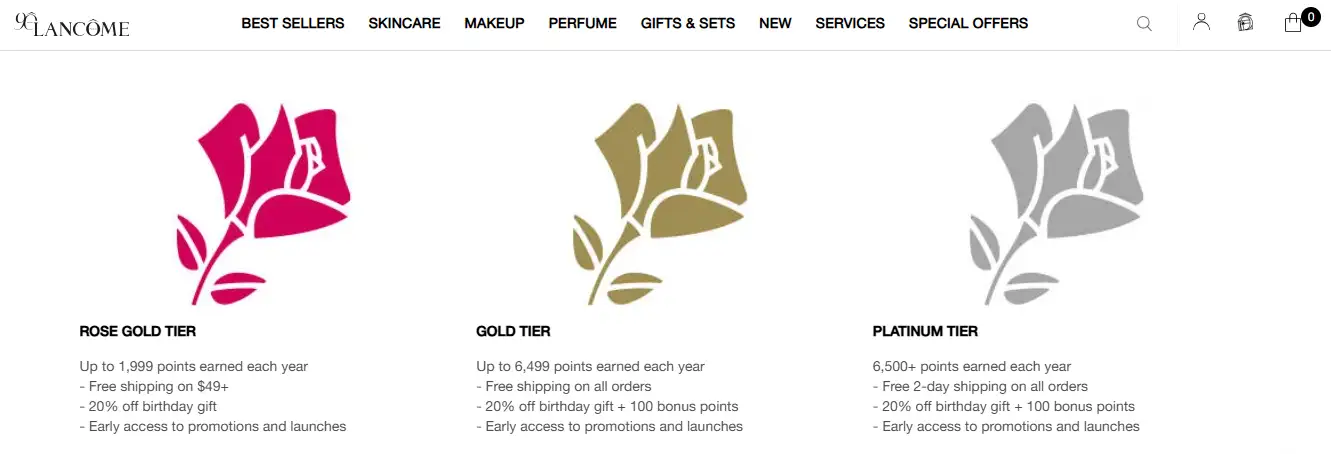
Referral Programs
Referral loyalty programs are marketing initiatives in which businesses reward customers for recommending the business to people they know, such as friends, family, or colleagues. These programs are built on the simple idea that word-of-mouth is one of the most trusted forms of marketing.
This type of partnership is highly effective and mutually beneficial for both businesses and clients. Referral-based loyalty programs help businesses find new clients quickly and reduce advertising costs. They leverage the trust people place in recommendations from their personal networks to bring in new high-quality leads, often resulting in higher customer lifetime value and increased profits. When a referral is successful, customers receive rewards such as bonus points, discount codes, free products, free delivery, or even cash.
According to Nielsen, 84% of consumers in 58 countries say they trust recommendations from friends and family when making purchases. It’s no surprise, then, that referral marketing is widely used across industries, including retail, banking, travel, and telecommunications etc.
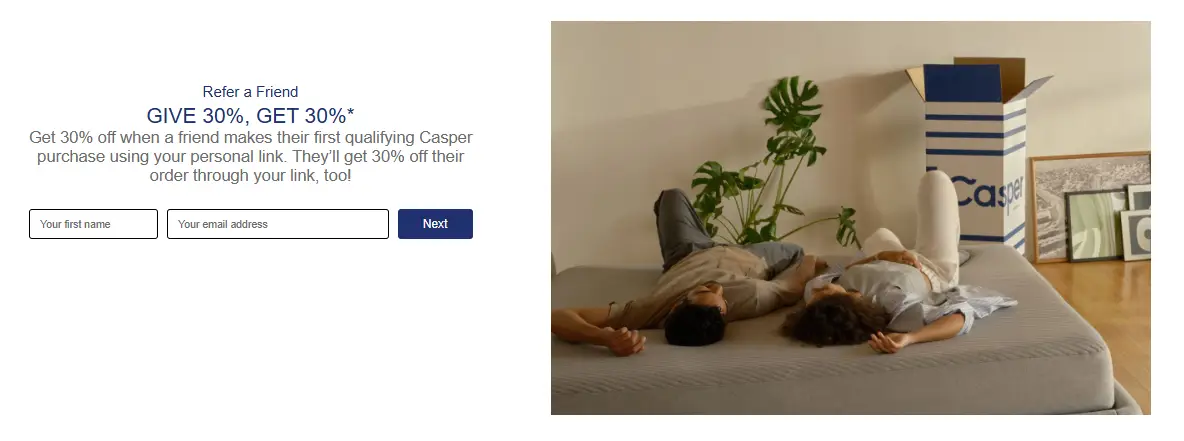
Cashback Programs
Cashback loyalty program is a rewards system offered by businesses where customers receive a percentage of their purchases back as cash rewards. For example, if a store offers a 5% cashback and you spend $100, you’ll get $5 back. This cashback can be used for future purchases, converted into gift cards, or withdrawn as real money.
Cashback reward programs are popular among consumers because of their simplicity shoppers earn a small amount of money back with every purchase. On top of that, these programs offer instant gratification, as customers can see the savings they’re earning in real time. Inflation is high, so shoppers are looking for smart ways to stretch their money and make every purchase count.
90% of customers indicated that the current inflation is prompting them to look for cashback rewards and discounts when shopping online.
Cashback programs encourage repeat purchases, incentivize higher spending, and cultivate long-term relationships. These programs are mainly used in grocery stores, coffee shops, gas stations, fast food chains, drugstores, etc.
Coalition Loyalty Programs
Coalition loyalty programs are collaborative efforts between two or more unrelated businesses that join forces to offer a unified loyalty experience for their customers. The core idea is to create mutual value: each partner contributes its own customer base, and through collaboration, all parties benefit from increased exposure, broader reach, and enhanced customer engagement.
Customers gain more opportunities to earn and redeem rewards across participating brands, making the program more appealing and valuable. This shared ecosystem often leads to greater customer retention and increased lifetime value for all involved businesses.
Coalition programs are commonly found in sectors such as grocery, fashion, coffee, beauty, electronics, and wellness industries, where complementary brands collaborate to encourage repeat purchases and expand their market reach.
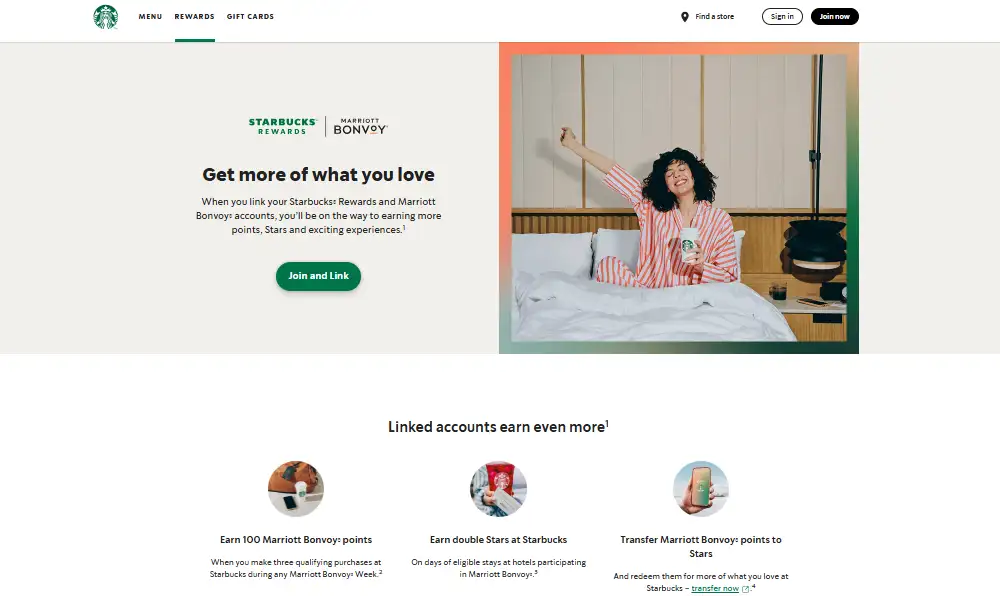
Gamified Programs
A gamified loyalty program adds fun, game-like elements such as challenges, quizzes, points, or mini-games to a company’s rewards system. The main concept is to make earning and using rewards more engaging for customers, while also standing out in the loyalty market.
By making the program more fun and carefree, companies can foster stronger emotional connections with consumers, encouraging them to return to the app and make repeat purchases. Some businesses add a competitive element between participants, while others create demand by offering collective toys as purchase rewards. Some programs introduce ranking systems, where customers level up by completing tasks or earning points.
Gamification has proven to be effective and those businesses who incorporate it in their loyalty strategies report a 47% increase in engagement, a 22% boost in brand loyalty, and a 15% rise in brand awareness. Gamified loyalty programs in retail are mainly used by grocery stores, fashion and beauty brands, quick-service restaurants, etc.
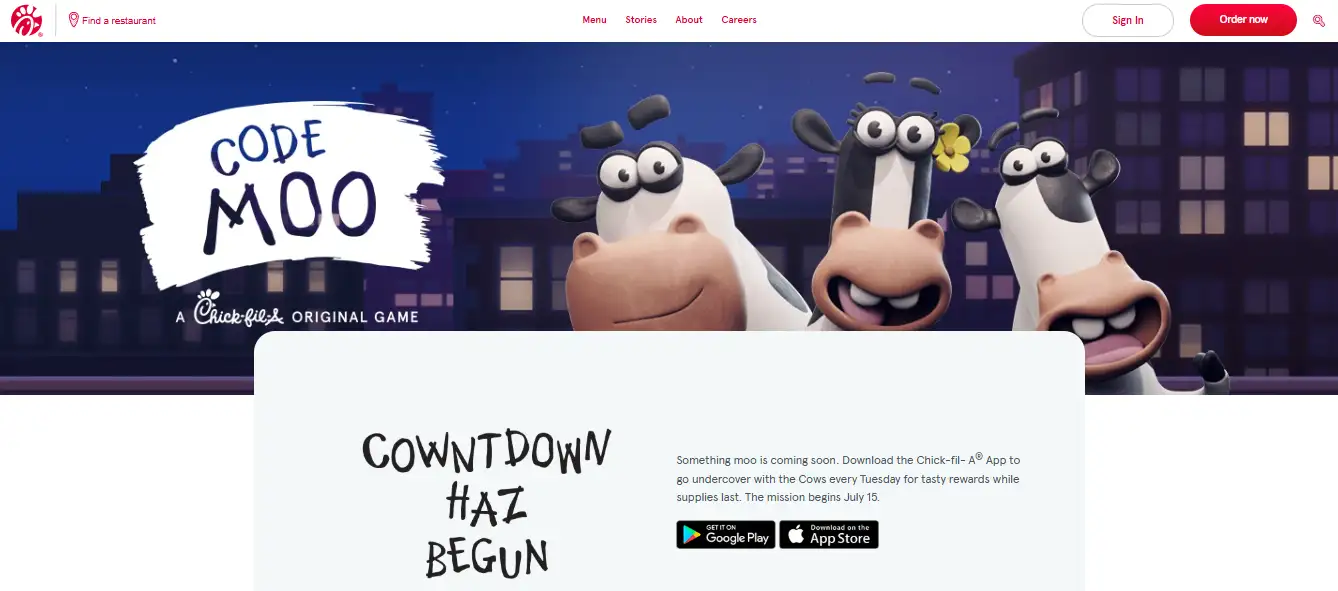
How to Create a Loyalty Program?
Developing a successful loyalty program goes beyond choosing rewards—it requires clear goals, deep customer understanding, and effective promotion. By carefully designing and marketing your program, you can build lasting relationships that drive repeat business and brand loyalty.
Define Your Program Goals
Before launching a loyalty program, it’s essential to define what success looks like for your business. While improving customer retention is often the primary objective, it’s important to dig deeper. Ask yourself: by how much do you want to increase it, and over what time period?
Some businesses may focus on measurable outcomes like boosting repeat purchases, increasing average order value (AOV), or growing customer lifetime value (CLV), all of which contribute to overall revenue growth.
Others may see their loyalty program as a way to enhance customer experience and drive deeper engagement through personalized rewards and exclusive offers. Whatever your goals, having a clear direction from the start will help shape your program’s structure, rewards, and long-term impact.
What is your current returning customer rate?
Want to close the gap?
Understand Your Customer Base
Once your goals are defined, the next step is understanding who you're designing your loyalty program for. Knowing your customer base, what they care about, how they shop, and what motivates their loyalty is essential to creating a program that delivers real value.
Start by gathering insights through surveys, feedback forms, social media, and interviews to uncover preferences and expectations. Then layer in demographic data like age, location, and lifestyle to create meaningful customer segments. For instance, younger consumers may be drawn to sustainable rewards or gamified experiences, while older customers might prefer exclusivity, personalized offers, or VIP treatment.
Find the Right Program Type and Software
With your goals in place and a clear understanding of your customers, it's time to choose the type of loyalty program that best fits your retail business. Whether it’s a points-based system, a punch card, a tiered structure, or a referral program, the model you choose should align with both your strategy and what motivates your shoppers. For example, points programs work well for small, frequent purchases, while tiered programs are great for encouraging long-term engagement and higher spending.
You’ll also need to decide how you’ll manage the program manually or with the help of loyalty software. Small shops might start with simple tracking methods, like physical punch cards or spreadsheets, while growing retailers often benefit from digital tools that automate tracking, personalize rewards, and make participation easier for customers. Whatever the format, make sure it’s easy to use, scalable, and tailored to your business and customer base. Consider the total cost of ownership, the features it provides, and evaluate the potential return on investment.
Promote the Program
An effective retail loyalty program needs strategic marketing to reach and engage customers. Start by creating a dedicated, visually appealing page on your website that clearly explains the program’s benefits, details, and how to join. Support this with blog posts that highlight the advantages of membership and share updates on new rewards and features.
Since many customers are active on social media, promote your program across platforms like Instagram, Facebook, X, and YouTube. Use engaging posts, stories, testimonials, and targeted ads to attract new members and keep current ones engaged. Additionally, include program promotions in thank-you emails and onboarding messages to encourage participation and generate organic word-of-mouth.
Exploring successful loyalty programs across various retail chains
In the competitive retail market, customer loyalty programs are essential for customer retention and repeat business. This exploration delves into the strategies of successful loyalty programs from leading retail chains. By highlighting key elements and real-world examples, we reveal how these programs enhance customer satisfaction, brand loyalty, and drive business growth.
IKEA Family
IKEA Family loyalty program is one of the most well-known and popular loyalty schemes in the world, boasting one of the largest membership bases. The program is open to everyone, and as a member, you’ll receive discounts on a wide range of products and even get free drinks.
Enrolling in the IKEA Family loyalty program is easy. Customers must create an account on the IKEA website and verify their email. Members receive a physical card upon registration, and the digital card will be delivered within 4 weeks. Moreover, the program’s benefits can be accessed immediately.
The IKEA Family loyalty program stands out by providing exclusive discounts, early access to sales, and additional perks to incentivize repeat purchases and create a sense of exclusivity. It builds community through events like workshops and tutorials, which help members connect emotionally. These workshops are free to attend.
The program emphasizes sustainability and aligns with today’s eco-conscious consumers, reinforcing shared values. Members often get updates about eco-friendly products, recycling options, and invitations to join sustainability-focused events.
IKEA Family’s mobile app is another reason for the program’s popularity. Text messages and push notifications from the brand keep consumers engaged, ensuring they are updated on new products and special offers.
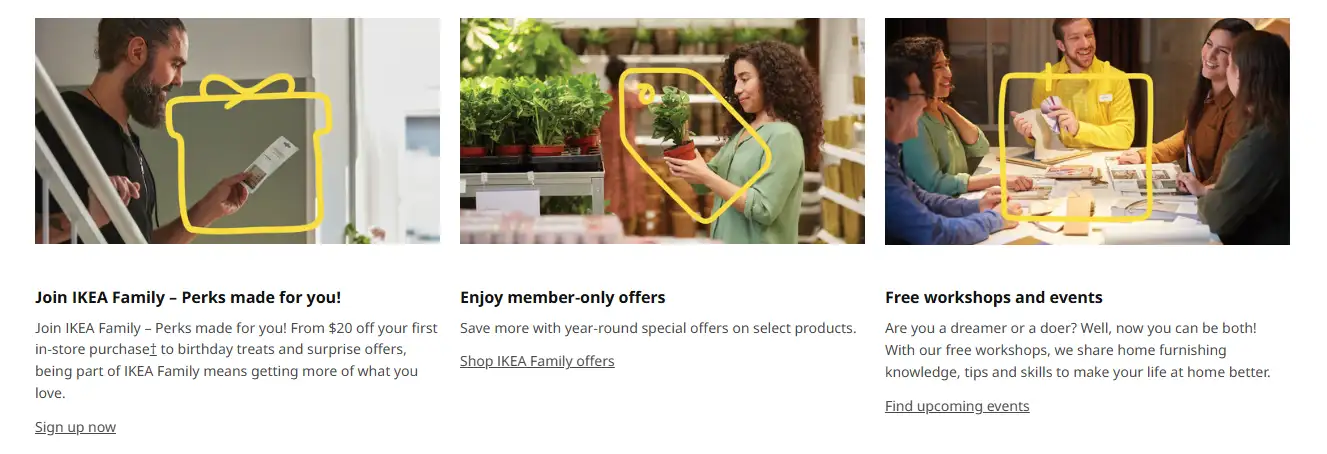
Starbucks Rewards
There’s no list of popular loyalty programs that doesn’t include Starbucks Rewards. It integrates a well-thought-out points-based system, tiered loyalty, and coalition loyalty to increase customer engagement and loyalty.
Customers can join using the Starbucks App, and the signup process is straightforward. Once signed up, members can start collecting points, also known as “Stars”, right away, win Starbucks gift cards, track their points, scan their loyalty cards, store payment methods, play games, and more. They can earn their Stars using their registered Starbucks Card or the Starbucks mobile app.
By accumulating Stars, members can redeem them for rewards. For example, with 200 Stars, you can get a handcrafted drink, such as a Cold Brew or latte, or a hot breakfast.
.webp)
When it comes to tiered loyalty, the UK’s Starbucks Rewards Program offers two tiers:
Green tier - This status is granted to customers upon registration.
Gold tier - Customers receive this status after earning 450 Stars within one year of earning their first star. Gold members receive complimentary extra shots of espresso, selected syrups, and whipped cream.
Starbucks Rewards and Delta SkyMiles are great examples of successful coalition loyalty programs. In this loyalty partnership, customers can link their Starbucks Rewards and Delta SkyMiles accounts. When they fly with Delta, they earn Double Stars on Starbucks purchases and miles on reloads of $25 or more to their Starbucks Rewards account. This coalition loyalty program exemplifies how brands can collaborate to enhance customer value, offering mutual benefits that strengthen customer engagement and loyalty for both companies.
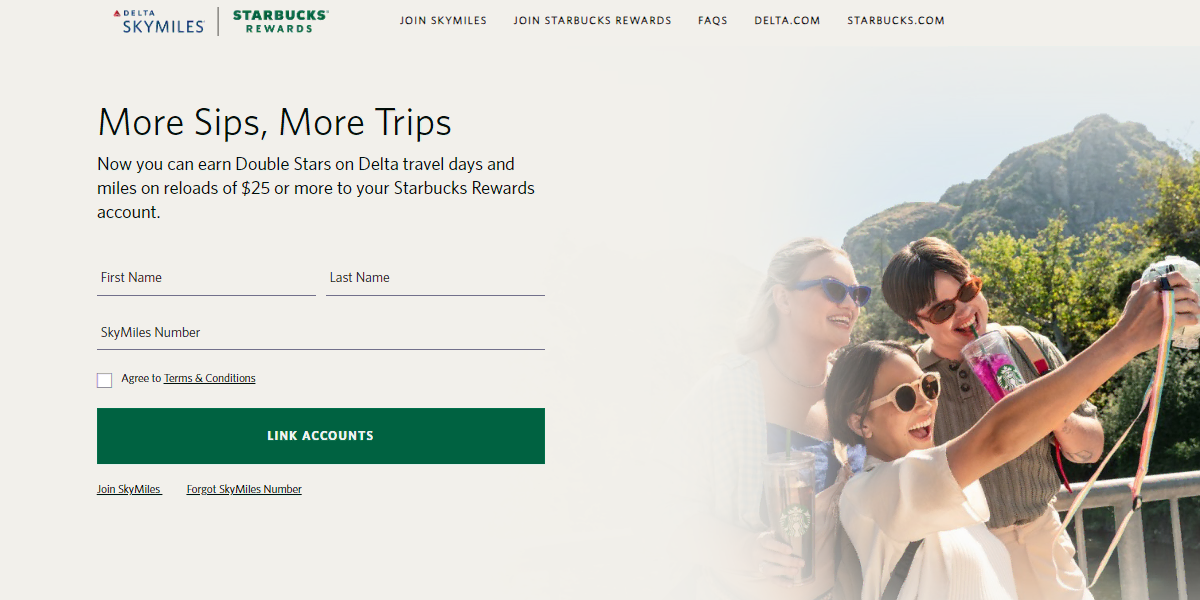
LEGO Insiders
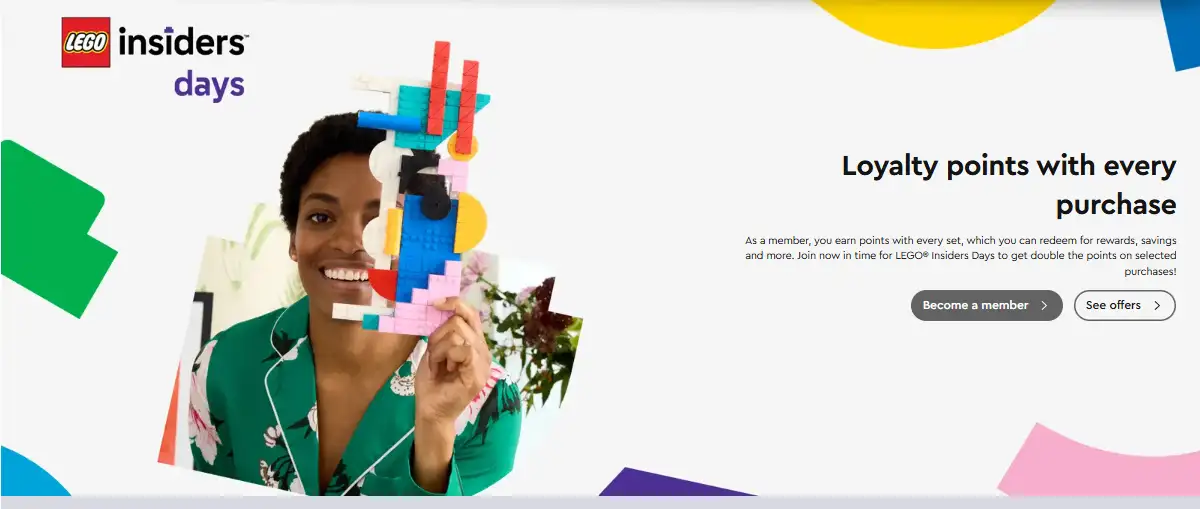
LEGO Insiders is the new loyalty program of a famous toy manufacturer. Launched in August 2023, it replaced the previous LEGO VIP loyalty program. The loyalty program includes many features of the old one, plus some additional benefits. Customers' previously accumulated VIP points will continue to be valid for use in the new program. The program welcomes anyone who wants to register on the LEGO website. Signing up is simple and free. All you have to do is visit the LEGO Insiders landing page.
Earning points is equally simple. Customers can collect points by purchasing LEGO products through the LEGO website and at their official stores. Members enjoy a variety of benefits, including earning points, receiving discounts, gaining early access to LEGO sets before non-members, getting LEGOLAND tickets, participating in family play activities, joining communities, and more perks. At specific times throughout the year, LEGO offers special promotions that let you earn double points. The program is designed to encourage repeat business and increase loyalty and engagement.
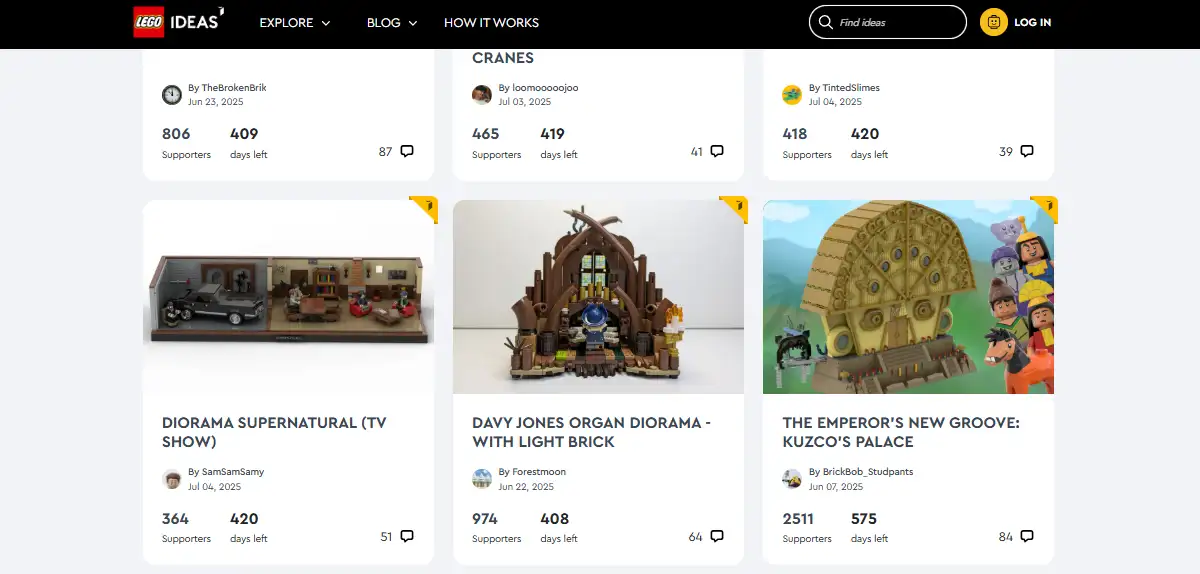
LEGO Insiders members gain access to LEGO Ideas, a platform where they can share their projects, vote for others' creations, and potentially see their own designs become official LEGO sets. This approach allows the company to engage its customers effectively, making them feel heard and appreciated.
Membership also grants LEGO enthusiasts access to the LEGO Insiders Community, a space where they can unwind, exchange tips and ideas, gain insights about LEGO sets and designers, and connect with fellow fans.
adiClub
When discussing the best examples of loyalty programs, adiClub stands out. The globally recognized retailer of sportswear and footwear achieved the highest ranking in the apparel category in Bond’s Loyalty Report for both 2021 and 2022. adiClub is easily one of the top retail loyalty programs available today.
The free-to-join loyalty program, adiClub, offers a straightforward sign-up process. Customers can sign up online through social login with Apple ID, Facebook account, Yahoo! or Google account.
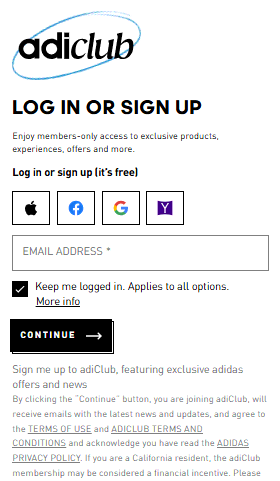
The program utilizes a points-based system and tiered structure, incorporating gamification elements to engage its loyal fans. For example, members can earn their first 50 points just by signing up for Adidas' adiClub. They can earn an additional 50 points by filling out their adiClub profile. Furthermore, they will receive 10 points for every dollar spent. As you can see, the adiClub point system is easy and simple to understand.
When it comes to rewards, members can redeem their points for members-only giveaways, exclusive products, products signed by famous athletes, access to sporting events and concerts, charity donations, and other perks. Customers can unlock even more benefits by accumulating points and advancing through different tiers in this program. As they collect more points, they progress to higher tiers, each offering enhanced advantages and exclusive rewards.
DIG Rewards
DIG (formerly DIG Inn) is an American chain of locally farm-sourced restaurants founded by Adam Eskin. Famous for its nutritious and comforting home-cooked meals, DIG sources its ingredients locally and incorporates seasonal items. This New York-based farm-to-counter restaurant chain operates locations in New York City, Philadelphia, and Boston.
The sign-up process is unsurprisingly easy. Customers can sign up either through the app or online. DIG Rewards members can access their accounts by clicking on a magic sign-in link sent to their email. The loyalty app enables users to make purchases, monitor their progress, view their purchase history, manage and redeem rewards, and more.
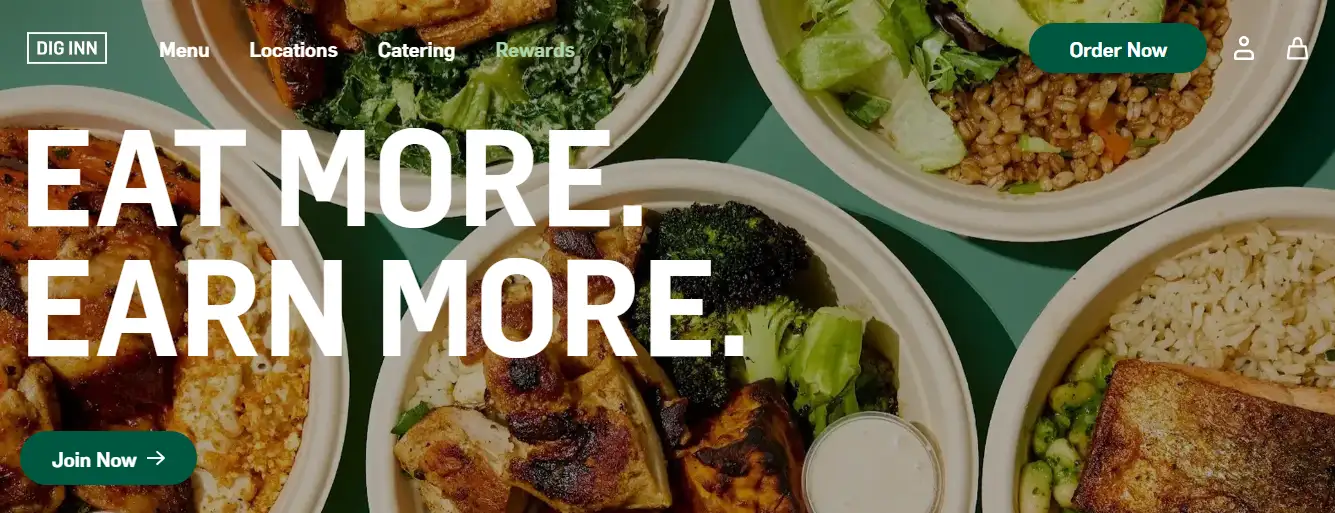
There are plenty of reasons for customers to join the program. For example, they receive $5 for every $50 spent. Plus, DIG Rewards is available on a mobile app for both iOS and Android. Customers also receive a $5 reward for signing up.
DIG Rewards is based on three tiers:
- Catering Sous Chef
- Catering Chef de Cuisine
- Catering Executive Chef
For every dollar customers spend at DIG Rewards, they earn 10 points toward their tier progress. Each tier has its own perks, ranging from a free dessert as an annual birthday reward to all Sous Chef and Chef de Cuisine perks and a free monthly featured bowl. Additionally, the website provides easy-to-understand instructions on how to earn rewards and track progress with the new program.
Conclusion
Customer retail loyalty programs play a crucial role in fostering long-term relationships between businesses and their customers. By offering rewards, discounts, and exclusive offers, these programs incentivize repeat purchases and enhance customer satisfaction. They provide valuable insights into consumer behavior, enabling retailers to tailor their offerings and improve overall service. Additionally, well-executed loyalty programs can differentiate a brand in a competitive market, driving customer retention and increasing profitability. As technology continues to evolve, integrating digital, gamified, and personalized elements into loyalty programs will become even more essential for maximizing their effectiveness and maintaining customer engagement.
Growave, a loyalty and rewards app for Shopify, offers an effective solution for integrating these modern elements into your retail strategy.
FAQ
Why are loyalty programs important for retailers?
Loyalty programs help retailers acquire new customers through positive word-of-mouth and retain existing ones by rewarding them for their continued loyalty. This approach increases customer lifetime value and allows businesses to boost earnings without significantly increasing their marketing budget.
How can retailers implement an effective loyalty program?
Retailers can implement an effective loyalty program by understanding their customers' preferences, setting clear objectives, and choosing a program structure that aligns with their brand. Utilizing platforms like Growave can simplify the process by offering integrated solutions tailored for retail businesses.
What is a retail loyalty program?
A retail loyalty program is a rewards system designed to encourage customers to shop and interact with a particular retailer more regularly. Unlike general promotions, these programs offer benefits such as exclusive discounts, early access to new products, and extended return periods to customers who demonstrate repeat purchasing behavior.
What types of loyalty programs are common in retail?
- points programs- tiered programs- referral programs- exclusive member benefitsEach type caters to different customer preferences and business goals, providing flexibility in how retailers engage and reward their customers.
How do loyalty programs benefit customers?
Customers benefit from loyalty programs by receiving rewards for their repeat business, such as discounts, exclusive offers, and personalized experiences. These programs make customers feel valued and appreciated, enhancing their overall shopping experience.
Trusted by over 15000 brands running on Shopify








